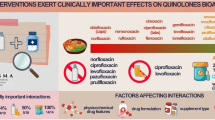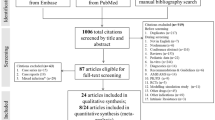Abstract
Background and Objectives
Resurgence of multidrug-resistant tuberculosis (MDR-TB) has raised a renewed interest in para-aminosalicylic acid (PAS) and other efficacious drugs. A gastro-resistant granule formulation (PAS-GR) was designed to be better tolerated than earlier forms of PAS, with fewer adverse effects from reduced production of meta-aminophenol. PAS release from PAS-GR granules is slower than with earlier formulations. Pharmacokinetic data are, however, limited and only a few studies have assisted in defining the best PAS-GR dose regimen. Interest in refining the latter continues and recent data contributed in better defining the optimal PAS-GR dose regimen in adults and children. The present paper draws on these recent studies, synthesizes pharmacokinetic results from different population groups, and draws comparisons with in vitro data and the results of earlier pharmacokinetic studies in order to discuss the most appropriate dosing regimen for PAS-GR.
Methods
A comparative in vitro dissolution study was carried out with a 1 g acid PAS equivalent of various formulations of PAS and PAS-GR and in vitro–in vivo correlations. Retrospective comparisons between recent and earlier clinical studies were also gathered to clarify the dose regimen of PAS-GR in adults and children.
Results
Exposure after a 4 g twice- or three times daily dose regimen in adult MDR-TB patients confirmed that both dose regimens can be used. The twice-daily dose regimen does not, however, confer any safety margin over the potentiality of “too” high plasma concentrations after a three times daily dose regimen and may lead to under-dosage when a dose is missed, as compliance often decreases over time.
Conclusions
Based on available data and practical considerations, a 4 g three times daily dose regimen of PAS-GR should be the preferred dose in hospital settings, where it remains the best regimen to cover the around-the-clock suppression of mycobacteria based on the minimal inhibitory concentration for PAS. In MDR-TB adults and in hospital settings, there is no safety advantage in administering a regimen of 4 g twice daily. As compliance is critical to the effectiveness of the treatment, a 4 g three times daily dose regimen may be more forgiving if the patient misses a dose.



Similar content being viewed by others
References
Lehmann J. Para-aminosalicylic acid in the treatment of tuberculosis. Lancet. 1946;1(6384):15.
Bernstein F. The effect of salicylate on the oxygen uptake of the tubercle bacillus. Science. 1940;92:204.
The Therapeutic Trials Committee of the Swedish National Association against Tuberculosis. Para-aminosalicylic acid treatment in pulmonary tuberculosis. Am Rev Tuberc. 1950;61:597–612.
Dubovsky H. Correspondence with a pioneer, Jürgen Lehmann (1898–1989), producer of the first effective antituberculosis specific. S Afr Med J. 1991;79(1):48–50.
Youmans GP, Feldman WH. The sensitivity of tubercle bacilli in vitro to streptomycin. Bacteriology. 1946;51:608.
Medical Research Council. Streptomycin treatment of pulmonary tuberculosis. Br Med J. 1948;2:769–82.
Karlson AG, Pfeutze KH, Carr DT, et al. The effect of combined therapy with streptomycin, para-aminosalicylic acid and pormin on the emergence of streptomycin-resistant strains of tubercle bacilli: a preliminary report. Proc Mayo Clin. 1949;24:85–8.
Karlson AG, Carr DT. Effect of single and double daily doses of para-aminosalicylic acid in tuberculosis of guinea pigs. Am Rev Tuberc. 1958;78:753–9.
Medical Research Council. Treatment of pulmonary tuberculosis with streptomycin and para-amino-salicylic acid. Br Med J. 1950;2:1073–85.
Medical Research Council. Isoniazid in combination with streptomycin or with P.A.S. in the treatment of pulmonary tuberculosis; fifth report to the Medical Research Council by their Tuberculosis Chemotherapy Trials Committee. Br Med J. 1953;2(4844):1005–14.
Crofton J. Chemotherapy of pulmonary tuberculosis. Br Med J. 1959;1(5138):1610–4.
MMWR outbreak of multidrug-resistant tuberculosis at a hospital—New York City, 1991. http://www.cdc.gov/mmwr/preview/mmwrhtml/00020788.htm. Accessed 9 Jan 2013.
Goodman LS, Gilman A. The pharmacological basis of therapeutics: a textbook of pharmacology, toxicology and therapeutics for physicians and medical students. 2nd ed. New York: The Macmillan Company; 1956. p. 1259–62.
Peloquin CA, Henshaw TL, Huitt GA, et al. Pharmacokinetic evaluation of para-aminosalicylic granules. Pharmacotherapy. 1994;14(1):40–6.
Peloquin CA, Berning SE, Huitt GA, et al. Once daily and twice daily dosing of p-aminosalicylic granules. Am J Respir Care Med. 1999;159(3):932–4.
Peloquin CA, Zhu M, Adam RD, et al. Pharmacokinetics of para-aminosalicylic acid granules under four dosing conditions. Ann Pharmacother. 2001;35:1332–8.
Liwa AC. Pharmacokinetics and dosing rationale of para-aminosalicylic acid in children and the evaluation of the in vitro metabolism of ethionamide, terizidone and para-aminosalicylic acid [thesis presented in Paediatric of the requirements for the degree of Masters of Science in Medical Sciences (Pharmacology) at the University of Stellenbosch]. 2012. http://scholar.sun.ac.za/handle/10019.1/20165. Accessed 9 Jan 2013.
Liwa AC, Schaaf HS, Rosenkranz B et al. Para-aminosalicylic acid plasma concentrations in children in comparison with adults after receiving a granular slow-release preparation. J Trop Paediatr 2013;59(2):90–4.
Qureshi SA. In vitro-in vivo correlation (IVIVC) and determining drug concentrations in blood from dissolution testing—a simple and practical approach. Open Drug Deliv J. 2010;4:38–47.
Heifets LB. Antituberculous drugs: antimicrobial activity in vitro. In: Drugs susceptibility of mycobacterial infections. Boca Raton: CRC Press; 1991. p. 26–7.
Todd RM. Treatment of primary pulmonary tuberculosis with P.A.S. Br Med J. 1953;1(4822):1247–9.
Soderhjelm L. Serum para-aminosalicylic acid following oral ingestion in children. Tex Rep Biol Med. 1949;7(3):471–9.
WHOPAR—part 6. Para-aminosalicylate sodium delayed-release granules 60% w/w September 2010 (Macleods Pharmaceuticals Ltd.). http://apps.who.int/prequal/whopar/whoparproducts/TB156part6v2. Accessed 28 Jan 2014.
Author information
Authors and Affiliations
Corresponding author
Rights and permissions
About this article
Cite this article
Kibleur, Y., Brochart, H., Schaaf, H.S. et al. Dose Regimen of Para-Aminosalicylic Acid Gastro-Resistant Formulation (PAS-GR) in Multidrug-Resistant Tuberculosis. Clin Drug Investig 34, 269–276 (2014). https://doi.org/10.1007/s40261-014-0172-7
Published:
Issue Date:
DOI: https://doi.org/10.1007/s40261-014-0172-7




